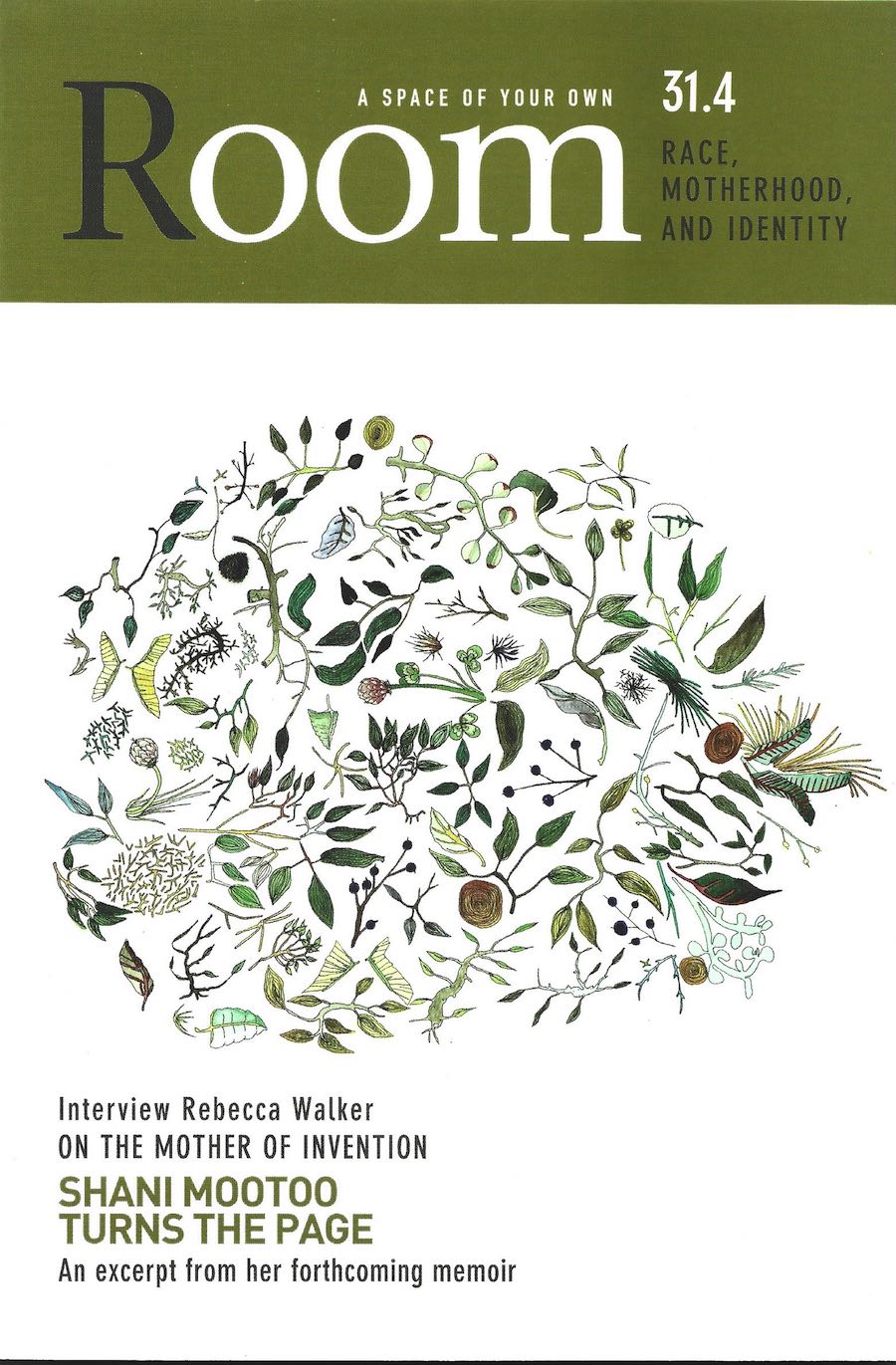Race, Motherhood, and Identity | 31.4
2008
Digital only; out of stock in print.
This issue identifies…the factors that contribute to identity itself, specifically the confluences of race and motherhood and our attitudes toward each, for some the very crux of who we are as women in a post-millennial age. Lest the task appear too ambitious, lofty, or academic—after all, the means by which we construct ourselves are as multiple as our unique and individual selves—we promise a healthy dose of art, literature and whimsy. Though the terrain is often complex and difficult to navigate, and identity a creature of construction and invention, ultimately what shapes us, and what we in turn shape as mothers, daughters, and sisters is the stuff of art and life our canvas.
Though some may not be mothers, nor choose to be in the future, the often-fraught relationships with our own mothers have a profound influence on self-definition, just as the genetics and geography of race interweave with notions of the feminine to cast a long shadow that embraces how we perceive and are perceived. The pieces in this issue explore the pivotal influences and flash points that form the crucible from which our identities are cast: past and present loves, life-altering acts of oppression, moments of fierce defiance, and affirming victories in the face of struggle. The women in these stories are remembering, forgetting, forgiving, and reinventing identity and though in practice this is a private voyage, we invite you to come along for a ride.
As we wade into the opening pages, Trinidadian-Canadian Shani Mootoo shares an excerpt from her upcoming memoir, a nostalgic return to the memories of her childhood in an homage to the power of literature, both plentiful and forbidden, and the early influences that forged her identity as a writer.
In “Crayons” Diane Fretz’s protagonist is launched into the past by the waxy scent of the titular tools of childhood until the narrative takes a surprisingly dark turn toward the end of life rather than its innocent beginning. In Lorelie Gerwing Sarauer’s piece “Postcards from the Edge” trigger flashbacks that invoke the uneasy dance of mothers and daughters, including the sinister jealousy that is so often a feature of this pas-de-deux.
Marnie Lamb’s “Brown-Haired Girls” is an irreverent nod to the power of physical appearance to shape identity, adopting a voice that leaves early childhood and ports the sarcasm of youth to counter the assumption that blondes have more fun and argue that flaxen-haired women enjoy more than their fair share of adjectives.
Some survive the scars of childhood and confrontations with mothers with less grace, sliding into self-destruction and citing not what is remembered but what is missing or lost as in Evelyn Lau’s three notable works. But, as the adage goes,”that which doesn’t kill us makes us stronger” and so to Jill Boettger’s “How toStop Missing Your Mother”, Jane Goodwin’s “How to Get Through” and Gillian Sze’s “This is How You Turn the Soil”, achingly beautiful odes to survival and are freshing poetic take on the how-to genre.
Tossed on the tides of gentle romance and missed opportunities, the women in “Lisping Beneath the Cries,” “Sonnet VI,” “Embrace,” and “Reading Letters to Stone,” are defined by nascent or unrequited loves, while the female voices of”Memorbilia” “Test Perspective +/-,” and “In This Picture” revert to the water of the womb and are themselves reborn in motherhood.
The issue’s penultimate section traverses the isolating waters that are a necessary rite of passage from naiveté to maturity. Though “no woman is an island”, in”The Island,” “Swimming Lessons,” “Christmas Day,” “Goddess of Low Tide,”and “Hanging Laundry in the Shadow of Texada Island,” women set out alone only to realize that they are a composite of all those they have met en route.
Finally, the magazine washes ashore after touching down in Cuba, Asia, andGermany in “The Barbacoa,” “Autistic in Cebu,” “Kissing in the Museum,” and”Pacific Index”— reminding us we are touched by history even as we try to out run it or make our own.
The last word belongs to Rebecca Walker, feminist activist for racial justice, new mother, and daughter to award-winning writer Alice Walker. Named by Time as one of the 50 most influential American leaders under 40, Walker holds forth with disarming candor about her publicly contentious relationship with her mother, her transition from ambivalence to peace as a new parent, and issues a challenge to all those who want to be identified with the next wave of revolution. We hope you enjoy this mother of an issue and race to pick up the gauntlet.

$10.00
Additional information
| Delivery | Canada, USA, International, Digital |
|---|
In this issue: Kimberley Alcock, Shari Andrews, Andrea M. Blundell, Jill Boettger, Sarah Butler, Andrea Cameron, Amber Dawn, Melissa Edwards, Diane Fretz, Lorelie Gerwing Sarauer, Jane Goodwin, Rachel Gray, Heidi Greco, Joy Gugeler, Amanda Hale, Elizabeth Haynes, Shaista Justin, Sarah Keevil, Marnie Lamb, Evelyn Lau, Michelle Lyn, Ruth Massey, Shani Mootoo, Sandra Pettman, Natalie Sorenson, Sylvia Stopforth, Gillian Sze, Fiona Tinwei Lam, Yi-Mei Tsiang, Rebecca Walker, Cynthia Woodman Kerkham